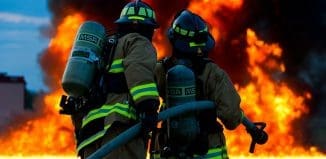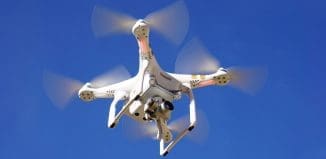New Technologies For Israel’s First Responders
This post is also available in:  עברית (Hebrew)
עברית (Hebrew)
Olga Grosman
In recent years, technology has been focusing on better equipping first responders in different conditions and scenarios.
A conference held on Thursday at the Air Force Center, organized by SIBAT (Ministry of Defense), Ministry of Public Security, and the Bird foundation, focused on innovations for first responders. During the conference, Major General Eyal Caspi, Head of Operation Department, National Fire and Rescue Authority, stated the changes in needs and service that the state of Israel is providing its citizens during the past few years in the field of fire fighting. The gaps revealed after the great fire in Mount Carmel in December 2010 have raised an immediate need to search for ways of bettering response in the field.
In order to draw conclusions, a team was established and was requested to learn from other countries in the world how they operate and deal with the dangers of fires. Caspi mentioned that he traveled, along with others in the field, to several states including Greece and Spain for this matter. Ever since then changes have been made in the structure and abilities of the fire department.
Among the findings of the delegation and headquarters, it was discovered that countries of the west are much more organized and prepared for events of fire than Israel in terms of technological means, manpower etc. The delegation was surprised to see that the countries technological systems were made in Israel. It seems that Israel is great in developing, manufacturing and installing systems abroad but has forgotten to take care of itself. Another issue revealed has to do with the number of firefighters in Israel. While other western countries has a firefighter for every 1,000 civilians, Israel has only one firefighter for every 6,000 civilians. This factor is more relevant, naturally, to the central cities, as the periphery the gap is probably even greater.
After the faults were revealed, several changes were made in the Israel fire service. A greater emphasis was put on coordination between operative services – home front command, the police and others. More fire stations were added, growing from 115 to 134 stations, allowing the responding teams to get to the scene much faster, from an estimated 17 minutes to 10 minutes. The vehicles were also upgraded – Israel has purchased 134 additional fire trucks and additional 14 firefighting aircrafts. The future will see an 6 additional helicopters to complete this aerial fire fleet. However, the manpower issue is still in need of improvement, even with the existing force of volunteers.
There are several central challenges the fire department in Israel has to face – the threat of rockets, skyscrapers, underground challenges and natural disasters. The threat of rockets on Israel has grown substantially in recent years and home front command remains the newest member of the defense services. Everyday life must be kept in case of rockets fired over Israel, and that has to do, of course, with the responding bodies – the police, fire department and the emergency medical services. We can also recognize difficulties for the fire teams operating in skyscrapers and underground structures, such as underground parking lots. The problem has to do with the difficulty to track people in such structures due to bad reception. Buildings in Israel can reach over 200 meters in height and parking lots can have seven underground levels.
In conclusion, despite the improvement in the Israeli fire departments capabilities, technological and human solutions are still required. The citizens of Israel should be safe in case of a fire and, whether high above ground or many floors under it, have someone to rescue them, and of course the firefighters need to return safe and sound.





























